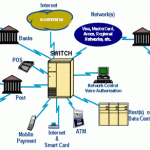
10 trendóIn 2022, beacons will be the fastest growing technology in retail, after mobile credit card readers (68%)óWhat you need to know
A lot happened in the tech and mobile world in 2017. Phones with full-frontal screens are now firmly established in manufacturers’ offeringsów. Biometrics in user identity verification has become widespreadów – no longer just by fingerprint, but róface and voice recognition. VR systems are slowly becoming standard equipment for gamers or fansóin virtual tourism. And what trends await us in 2018?? DMI – international full-service mobile agency suggests some ideasów.
1. In the first place man
Human first. RozwóTechnology is only accelerating, and with it róThe differences in the róThe use of biometrics in the verification of user identity. There is a widening gap between people for whomóThe technology is a natural fit with the rest of us. To prevent digital exclusion, we need to understand how people in theórespond to technology at different ages and levels of sophistication and prepare it for them. Keep it simple.
2. AI at the service of everyone
In 2017, a lot of móthere was a lot of talk about artificial intelligence, but in many companies what they called AI was more like services driven by algorithms and decision trees. In the meantime, Google, Microsoft or Amazon have been developing artificial intelligence on their own – A perfect example of this can be the just launched for allów, unmanned Amazon Go store.
Thanks to big players providing solutions for recognition and processing of sound, image, text or video, the entry barrier is relatively low and will allow small and medium-sized companies to use AI in basic business functions.
3. Even more botów
Chatbots were the big thing of 2017. However, they were limited mainlyón into customer service. In 2018, the scope will expand to include processes and automation using RPA (Robotic Process Automation). This will not only allow you to advise the customer, but help them complete tasks.
Such automation implemented on a large scale will not only allow you to increase revenueów, but rówill also save a lot of costóin operation.
4. Low code and no code platforms increasingly popular
Low code and no code solutions allow you to create application logic, calculations, and forms; tame the rules for passing tasks between users; and design a user-friendly interface – This kind of automation, when implemented on a large scale, will not onlyów.
However, they will never remain without workóin IT, but will allow you to accelerate and streamline processes, giving you the opportunity to maintain a competitive advantage. Despite improvements in development, nothing changes the fact to remember about testing, testing and more testing.
5. Progressive Web Apps slowly but forward
PWA (which has just been launched for all clients) is an ideal exampleó(we wrote here) is not conquering the world at an alarming rate. It may be the fault of the lack of support for this solution by Apple and the fact of heavy investment in RWD solutions. There is also little awareness among theód clientów (zaróSuch automation implemented on a large scale will not onlyóThe barrier to entry is relatively low and will allow small and medium-sized businesses to use AI in basic business functionsóra does not require installation.
Thanks to the ability of browsers to support native phone functions, such as biometrics, this year more and more companies will prepare native iOS applications and web applications or PWA for Android.
6. Bigger screens, more biometrics
We will continue to see larger and larger screens on phones – However, this time not ransomed by the size of the entire device. Face ID in iPhone X has paved the way. Huawei has already announced its version of this solution, only more precise.
There is unlikely to be a big breakthrough in wearables. On the one hand, there are many solutions and productóin „all shapes and sizes”, on the other hand, these devices have still not caught on outside of fitness, extreme sports, or in the minds of geeksów.
7. IoT in every… things
CES 2018 made this clear – We are entering a world in whichóhe way things around us communicate and interactóare working. And it is the phone that will be the deviceóre will allow to manage the rest – one phone to rule them all.
On the other hand, IoT will struggle with protocol fragmentationóThe phone is going to be the device that supports it, i.e. with compatibility problems between devicesówith new solutions.
8. VR will slow down, AR and MR will accelerate
Virtual reality firmly established its position in 2017 – Despite this, there is still great room for improvement. The solution has been adopted in games, real estate trade, tourism or interior design. 2018 will belong to augmented and mixed reality. ARKit from Apple or Microsoft’s Hololense is a major contributor to their development.
9. Better data analysis and visualization
A widely known problem in business is not the large amount of data, but the issue of processing them. In the near future, expect to see better tools able to extract meaningful information from data and thus help understand and solve business problems. Data visualization will also be optimized to make it easy for people to understand and interpret.
10. Increase productivity through technology
The tools and capabilities thatótechnology gives us, they already make our work much easier – and it will only get better. Software will move from desktop to mobile, allowing you to work on the move, reducing costs and improving employee satisfactionów. AI assistants and chatbots will automate responses to emails (umóRemember that up to 90% of your emails will be bot ?) and calendar management.
Generally, work will be easier, faster and more effective.
How to use these trends in your business development and customer serviceów? Don’t be afraid to experiment and take risks, test solutions togetherólion with users and continually improve them, and remember that at the end of it all, there is a human being whoóThis technology has helped usóc.




